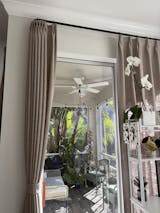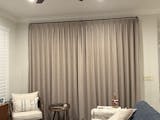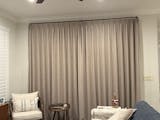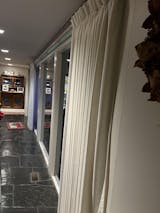Sustainable Design Made Simple: Why It Matters & How to Do It
By Brittany McNab, Fifteen Twelve Home Co.
I can’t be the only one who wants what I want– and I want it now. And that about sums up our modern day culture– the wanting, the consuming, and the instant gratification. The feeling that you get when you’ve just updated a space, a few weeks or months passes by– and the itch to change it kicks in– so you go out and you buy something new. It’s a vicious cycle that goes on and on.
I’m not here to preach to you about what you should consume, how often you should consume, and whether or not you should stop– I am here to say though, that sustainable design, although being better for the Earth– is good for you too. It’s good for your wallet– and that matters to everyone doesn’t it? By mindfully making choices like these, you can create a space that feels fresh and exciting without constantly feeling like you need to change your space up. Sustainable design allows you to invest in quality, reduce waste, and design a home that really feels like your style. In the end, it’s not just about what you buy—it’s about how you live– and that’s what really matters.

from:@citrineliving
1). Be Thrifty
Re-using or upcycling an item is one of the easiest and most rewarding ways to incorporate sustainable design into your home. My favourite avenues are Facebook Marketplace, Kijiji (or Carrot– or whatever your local buy-and-sell platform is), and thrift stores like Goodwill or Value Village. Even events like garage sales or estate sales are great ways to find high-quality pre-loved pieces.
Look for well-made items with lasting value. If you know you may not want something forever—like a trendy piece or a lifecycle item such as a toddler bed—consider its resale value. If you can likely sell it again for a similar price, it’s a great second hand buy. Over the years, I’ve found many big-ticket items for my home this way, including my bed frame, sofa, dining table, and some of the cutest vintage pieces. Yes, finding quality items takes patience, but it’s incredibly rewarding. The thrill of the hunt keeps me coming back to buy-and-sell groups nearly every weekend.

from:@dinasdigs
Tip: Imagine new and different ways in which a find could be upcycled. Could you paint it? Hack it? Style it differently?
2). Purchase Higher Quality Items and Heirloom Pieces
This tip might sound like it’s more expensive and you’re right– it can be initially. However, when you choose a piece that stays with you for years, decades, or even a lifetime your initial investment will go a long way. For example, instead of buying three or four $2,000 sofas for your living room and them collectively lasting around 10-12 years– imagine that you purchased one $7,000 sofa but it stayed with you for 15 years and was still in great condition for reupholstering– extending its life another decade. Oftentimes, the most sustainable thing is purchasing something that’s built to last.

from:@homestylebypaula
Tip: Even inexpensive items can be maintained to last. Maintenance things like regular cleaning, fixing broken components, and tightening screws regularly will extend the life of your items.
3). Using Sustainable Materials and Finishes
Incorporating salvaged wood and repurposed materials isn’t just good for the environment, but also a very affordable way to update your home and add character. We will always treasure our mantle and floating shelves in our home because we made them out of recycled and repurposed barn wood that we wire-brushed and made over into something that felt modern yet full of character.
You can find materials like these the same way you can find second-hand furniture– through Facebook Marketplace and local buy-and-sell groups. You can also find building materials at your local Restore (Habitat for Humanity) shop, which often carries building materials at a fraction of the cost.

@citrineliving
Tip: Once you begin planning a project, start looking for second-hand materials and reimagining how they could fit into your design scheme. We’ve sometimes stored materials for years in anticipation of a project!
Sustainable Design: Intentional Design at It’s Best
While sustainable design may seem like it’s only a practice about restraint—it’s about so much more. It’s about making thoughtful choices that benefit your wallet, your home, and our planet. Whether you’re thrifting your furniture and home decor, investing in quality pieces, or repurposing materials, these small steps can have a big impact on your home and the way that you live your life. When you shift your mindset from constant consumption to intentional design, you create a home that feels more personal, timeless, and fulfilling. My favourite point of this whole article, is that you create a home that truly feels unique because so many of the pieces are unique. Interior design was never about consumption– it’s always been about personal expression and sustainable design is an amazing way to keep the spirit of Interior Design alive and well.




























Leave a comment